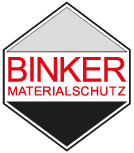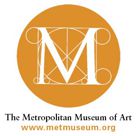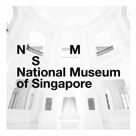Beschränkung des Verbreitungsgebietes unserer Internetwerbung - Rechtlicher Hinweis an Adressaten dieser Webseite aus dem Markt der Europäischen Union:Attention: No Offer / Service and Installation / Maintenance of Fumigation Devices with Nitrogen / Argon and Carbon dioxide within the European Union markets! Die auf dieser Webseite und/oder verlinkten Webseiten angebotenen Dienstleistungen und/oder Waren zur Schädlingsbekämpfung im Biozidbereich (nicht Vorratsschutz!) mit dem Wirkstoff Stickstoff (CAS.-Nr. 7727-37-9), Kohlendioxid und Argon (Inertgase) sind beschränkt auf Länder außerhalb des Marktes der Europäischen Union. Adressaten unserer Werbung aus dem Markt der Europäischen Union werden von uns mit den auf diesen Webseiten angebotenen Dienstleistungen und/oder Waren zur Schädlingsbekämpfung im Biozidbereich (ausgenommen Vorratsschutz) mit dem Wirkstoff Stickstoff (CAS.-Nr. 7727-37-9), Kohlendioxid und Argon (Inertgase) nicht beliefert/versorgt. Innerhalb des Marktes der Europäischen Union dürfen Dienstleistungen und/oder Waren zur Schädlingsbekämpfung mit dem Wirkstoff Stickstoff (CAS.-Nr. 7727-37-9) weder angeboten noch durchgeführt werden. Gleiches gilt für Kohlendioxid und Argon (Inertgase). Dies folgt aus der Biozid-Verordnung (EU) Nr. 528/2012 zur Bereitstellung und Verwendung von Biozidprodukten, die für unser Unternehmen bindend ist. |
The N2-fumigations are carried out in gasthight bubbles or enclosures. An anoxic atmosphere requires an enclosure, nitrogen gas, and oxygen monitoring device. Enclosures must be constructed of vapor impermeable materials such as steel or aluminized polyethylene films. There are several types of enclosures: hard-wall, soft-wall, and mobile chambers.


Gas supply from back-up gas tanks and on-site production of nitrogen from ambient air. The on-site Nitrogen generators feed the controlled atmosphere chambers for preservation and conservation of various artefact pieces. Climate conditioning is also important not to harm artifacts.
| Infobox: Golden Spider beetle (Niptus hololeucus) and Hump Spider beetle (Gibbium psylloides): The Golden spider beetle has similar feeding habits to the Australian species (like Ptinus tectus and Ptinus fur), exhibits a preference for moist places (kitchens, toilets) and will occasionally infest textiles and papers. It is increasingly common in domestic premises and infestations often drives people crazy.
There is usually one generation per year in unheated conditions in temperate lands and peak activity is reached between August and November.
Gibbium psylloides is tolerant of cool conditions and can survive for long periods without food supplies. Spider beetle larvae will infest all manner of dry animal and vegetable matter including grain, spices, herbaria and a wide variety of miscellaneous debris. They will scavenge among the debris of neglected stores, and have even been reported infesting organic insulation materials. The larvae bore holes in which to pupate, and in so doing may damage historic textiles and papers.
They also contaminate organic materials with droppings and silk webbing. Adult beetles, too, will damage also textiles in museums and storage facilities. Gregarious and nocturnal, they spend the day in cracks and crevices. Consequently they can thrive in old or historic buildings and structures where they find many harbourages. |













